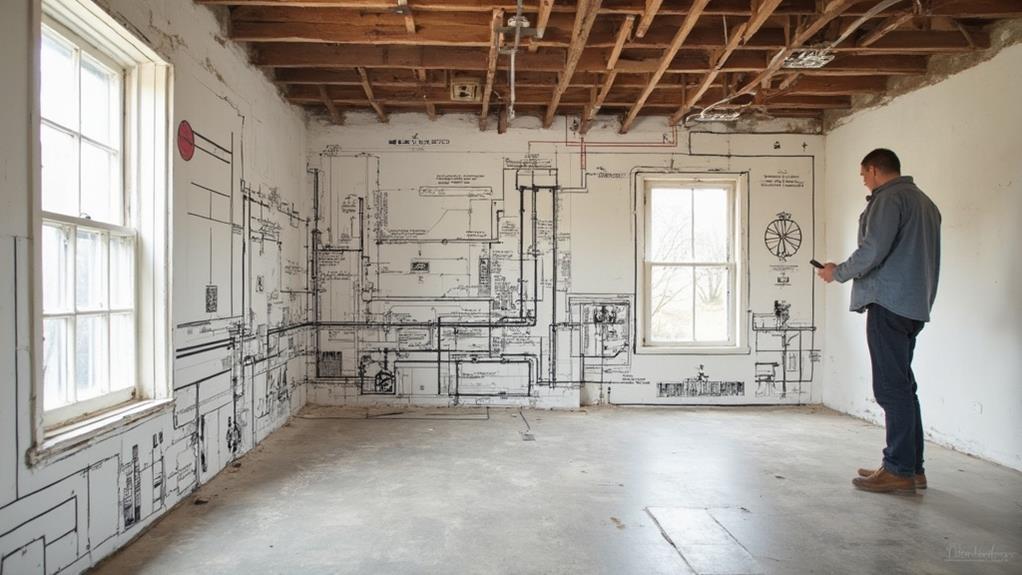Building codes significantly impact renovation budgets and timelines. These regulations ensure safety and compliance but can add costs for permits, inspections, and potentially necessary upgrades. Permit fees vary based on project scope and location, while inspections may cause delays if scheduling is tight. Code requirements often necessitate using specific materials or methods, affecting both expenses and project duration. Energy efficiency standards and safety regulations may require additional investments in insulation, electrical systems, or fire prevention measures. Working with code-savvy contractors can help navigate these complexities, but it's crucial to factor code compliance into your renovation planning. Understanding local building codes is key to avoiding costly surprises and ensuring a smooth project execution.
Understanding Local Building Codes
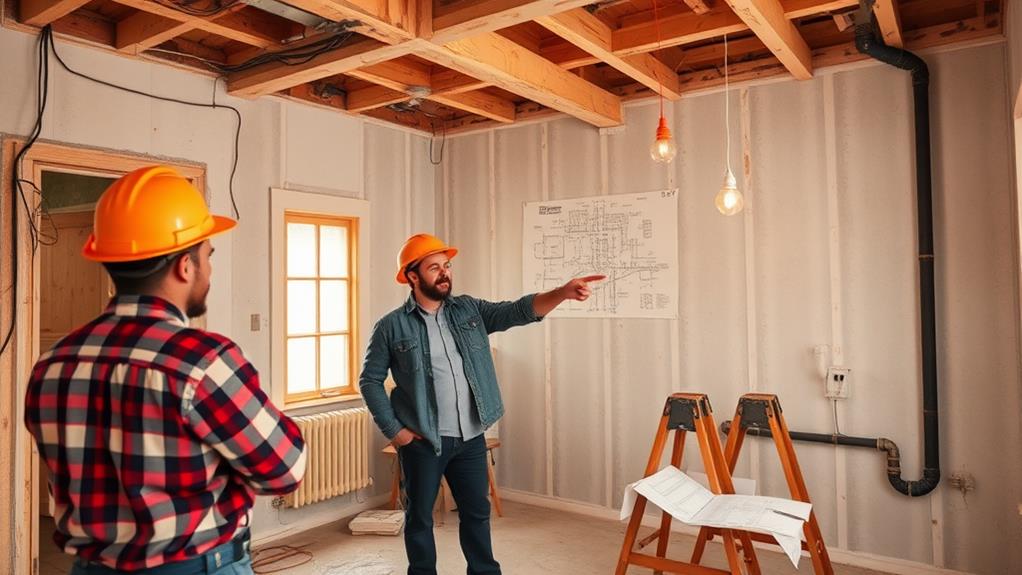
When embarking on a renovation project, understanding local building codes is crucial for ensuring compliance and safety. These codes vary by jurisdiction and cover aspects such as structural integrity, electrical systems, plumbing, fire safety, and energy efficiency. Familiarizing yourself with these regulations early in the planning process can prevent costly mistakes and delays.
To begin, contact your local building department or visit their website for information on current codes and permit requirements. Many municipalities offer free resources and guidance for homeowners. Pay attention to zoning laws, which dictate allowable uses and modifications for your property. Be aware that codes are regularly updated, so ensure you're working with the most recent version.
Consider hiring a professional familiar with local regulations, such as an architect or contractor, to navigate complex code requirements. They can help interpret technical language and ensure your plans meet all necessary standards. Remember that some renovations may trigger additional code compliance requirements, such as bringing older structures up to current standards. Understanding these potential impacts can help you budget and plan more effectively for your renovation project.
Common Code Requirements
Common code requirements form the backbone of building regulations across most jurisdictions. These standards typically address key safety and structural concerns, including fire protection, electrical systems, plumbing, and structural integrity.
Fire safety codes often mandate smoke detectors, fire-resistant materials, and proper egress routes. Electrical codes specify appropriate wiring methods, circuit protection, and grounding to prevent hazards. Plumbing regulations ensure proper water supply, drainage, and ventilation systems.
Structural requirements focus on load-bearing capacity, foundation stability, and resistance to natural forces like wind and earthquakes. Energy efficiency standards are increasingly common, mandating insulation levels, window performance, and HVAC system efficiency. Accessibility codes require accommodations for individuals with disabilities, such as wider doorways and ramps. Many jurisdictions also enforce zoning regulations that dictate building height, setbacks, and allowable uses.
Specific requirements may vary by location and building type, but generally include provisions for occupant health and safety, environmental protection, and resource conservation. Renovators must familiarize themselves with these common code requirements to ensure compliance, avoid costly revisions, and maintain project timelines.
Permit Costs and Timelines
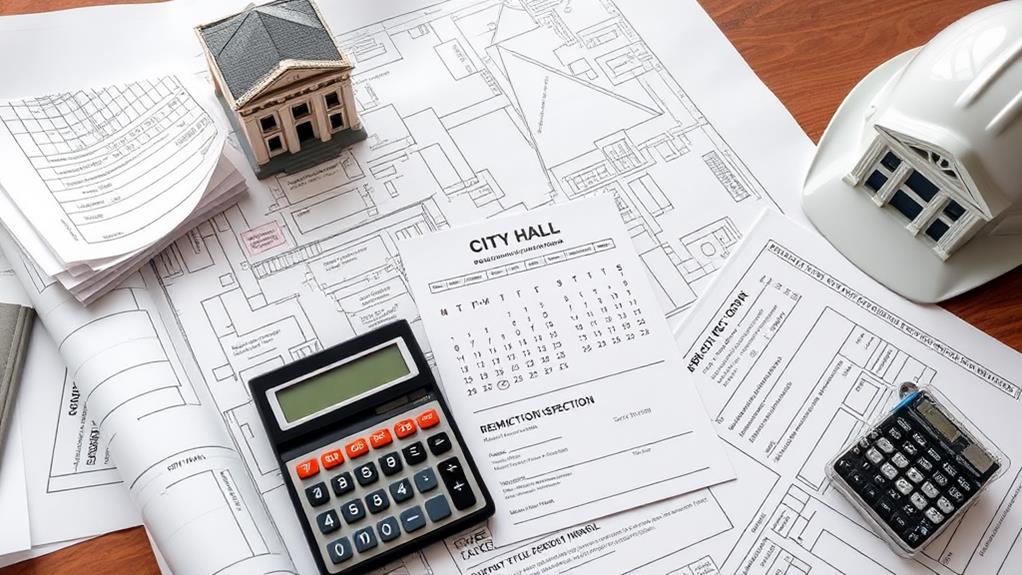
Three key factors influence permit costs and timelines for renovation projects: the scope of work, local regulations, and the efficiency of the permitting process. Larger, more complex renovations typically require higher permit fees and longer processing times due to the need for multiple inspections and reviews.
Local regulations vary significantly, with some municipalities charging flat rates and others using a percentage of the project's value to determine fees.
The efficiency of the permitting process can greatly impact timelines. Some jurisdictions offer expedited services for an additional fee, while others may have backlogs that delay approvals. On average, minor renovations may obtain permits within 1-2 weeks, while major projects can take 4-8 weeks or longer.
Costs for permits can range from $50 for simple projects to several thousand dollars for extensive renovations. Homeowners should budget 1-3% of their total project cost for permits and associated fees. It's crucial to factor these expenses and potential delays into the overall project plan. Consulting with local building departments or hiring an experienced contractor can help navigate the permitting process more efficiently and accurately estimate associated costs and timelines.
Inspection Processes
Inspection processes form a key component of the building permit and renovation compliance system. These inspections ensure that construction work adheres to local building codes and safety standards. Typically, multiple inspections occur throughout the renovation process, including foundation, framing, electrical, plumbing, and final inspections.
To initiate an inspection, homeowners or contractors must contact the local building department and schedule an appointment. Inspectors will visit the site to examine specific aspects of the work, verifying that it meets code requirements. If issues are found, corrections must be made and a re-inspection scheduled, potentially causing delays and additional costs.
It's crucial to understand the inspection schedule and requirements before beginning renovations. Some jurisdictions may require inspections at specific stages of construction, while others may have more flexible timelines. Failing to obtain necessary inspections can result in fines, work stoppages, or even the need to remove completed work. To streamline the process, maintain open communication with inspectors, keep detailed records of all work performed, and ensure that all subcontractors are aware of inspection requirements and schedules.
Code Violations and Penalties
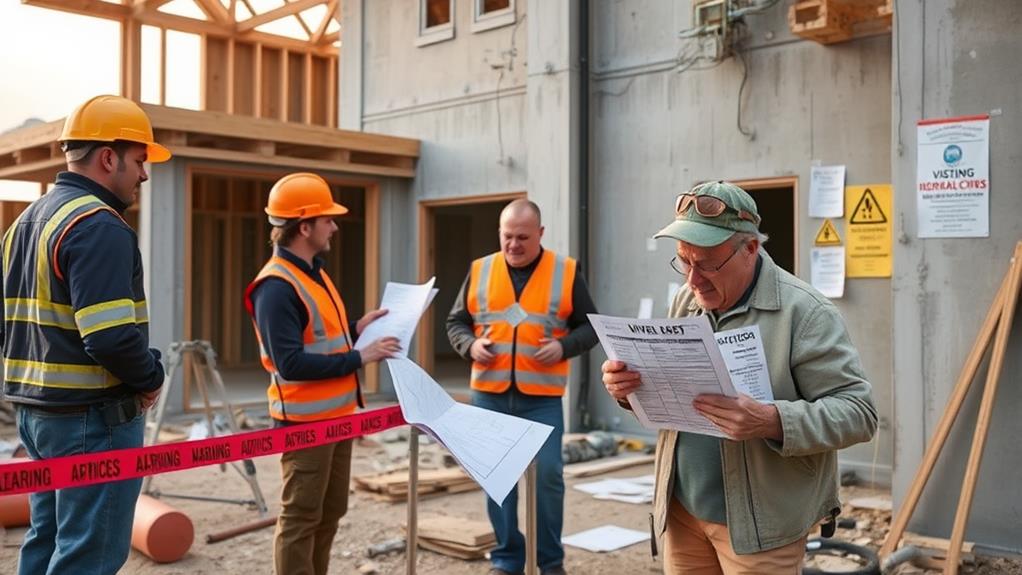
Failure to comply with building codes during renovations can lead to serious consequences for homeowners and contractors alike. Code violations can result in various penalties, ranging from fines to legal action. Common violations include unauthorized work, substandard materials, and failure to obtain proper permits.
Monetary penalties for code violations can be substantial, often increasing with the severity and duration of non-compliance. In some jurisdictions, fines may accrue daily until the issue is resolved. Additionally, homeowners may be required to remove or redo non-compliant work, significantly impacting both budget and timeline.
More severe consequences can include stop-work orders, which halt all renovation activities until violations are addressed. This can cause significant delays and cost overruns. In extreme cases, local authorities may condemn the property, rendering it uninhabitable until brought up to code.
Contractors found repeatedly violating codes may face license suspension or revocation, jeopardizing their ability to work in the industry. Homeowners and contractors may also face legal liability if code violations result in injuries or property damage. To avoid these penalties, it's crucial to work with licensed professionals, obtain necessary permits, and adhere strictly to building codes throughout the renovation process.
Retrofitting Older Homes
Retrofitting older homes to meet modern building codes presents unique challenges for homeowners and contractors. These structures often lack contemporary safety features, energy efficiency standards, and accessibility requirements.
Common areas requiring updates include electrical systems, plumbing, insulation, and structural integrity.
Electrical retrofits may involve replacing outdated wiring, installing GFCI outlets, and upgrading the main panel. Plumbing updates might include replacing lead pipes, improving water pressure, and ensuring proper venting. Energy efficiency upgrades typically focus on adding insulation, sealing air leaks, and installing energy-efficient windows and doors.
Structural modifications may be necessary to meet current seismic codes or address foundation issues. Accessibility improvements, such as widening doorways or adding ramps, may be required in some jurisdictions. Historic preservation regulations can further complicate retrofitting efforts, as maintaining a building's original character must be balanced with code compliance.
Homeowners should consult with experienced contractors and local building officials to develop a comprehensive retrofit plan. This approach helps prioritize necessary updates, manage costs, and ensure compliance with current building codes while preserving the charm and character of older homes.
Energy Efficiency Standards

Modern energy efficiency standards have become a cornerstone of building codes for renovations, aiming to reduce energy consumption and lower utility costs. These standards often require upgrades to insulation, windows, doors, and HVAC systems in older homes. Renovators must consider factors such as R-value for insulation, U-factor for windows, and SEER ratings for air conditioning units when planning their projects.
Compliance with energy efficiency codes may involve installing energy-efficient appliances, LED lighting, and programmable thermostats. Some jurisdictions mandate blower door tests to measure air leakage and ensure proper sealing. Renovators should also be aware of requirements for renewable energy systems, such as solar panels or geothermal heat pumps, which may be incentivized or required in certain areas.
While these standards can increase initial renovation costs, they often result in long-term savings through reduced energy bills. Homeowners may also benefit from tax credits or rebates for energy-efficient upgrades. It's essential for renovators to work closely with local building officials and energy consultants to ensure compliance with current standards and to maximize the benefits of energy-efficient renovations.
Safety Regulations
While energy efficiency is crucial, safety regulations form the backbone of building codes for renovations, ensuring the protection of occupants and workers alike. These regulations cover various aspects of construction, including structural integrity, fire safety, electrical systems, and accessibility.
Structural safety codes dictate requirements for load-bearing walls, foundations, and roofing to prevent collapse and withstand natural disasters. Fire safety regulations mandate the use of fire-resistant materials, proper placement of smoke detectors, and adequate emergency exits.
Electrical codes ensure proper wiring and grounding to prevent shocks and fires. Plumbing regulations address issues like proper venting, backflow prevention, and sanitation to safeguard health. Ventilation requirements ensure adequate air quality and prevent the buildup of harmful gases.
Accessibility codes, such as those outlined in the Americans with Disabilities Act, mandate features like ramps and wider doorways for individuals with disabilities. Compliance with these safety regulations often requires specialized inspections and certifications, which can impact both the budget and timeline of renovation projects. However, adhering to these codes is non-negotiable, as they are essential for protecting lives and property.
Hiring Code-Savvy Contractors
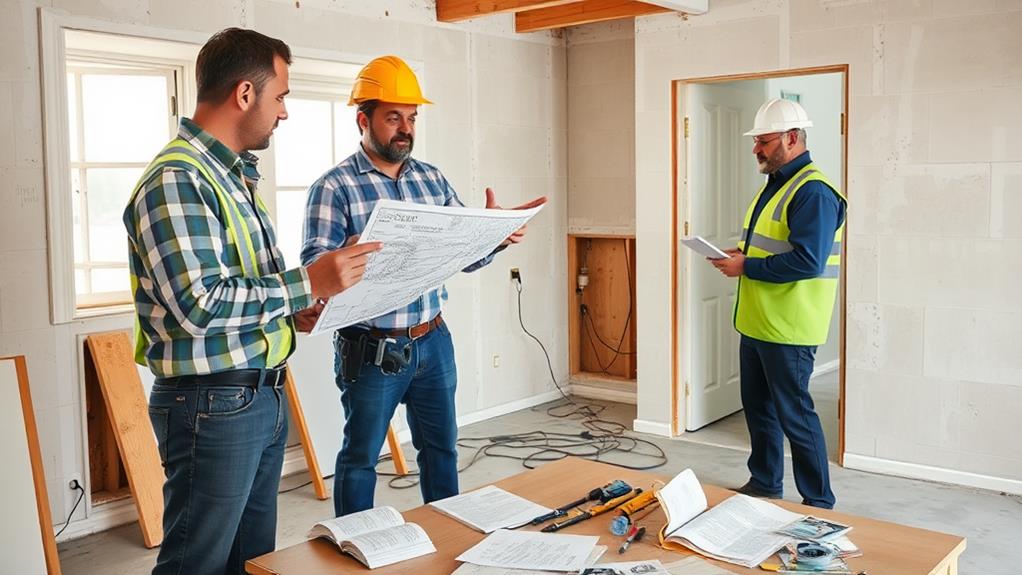
Given the complexity of building codes and safety regulations, hiring contractors with extensive code knowledge is crucial for successful renovations. Code-savvy contractors bring invaluable expertise to the project, ensuring compliance with local, state, and federal regulations. These professionals stay updated on the latest code changes and can navigate the often-complex permitting process efficiently.
When selecting a contractor, prioritize those with a proven track record of code compliance and a thorough understanding of your area's specific requirements. Look for certifications or memberships in professional organizations that emphasize ongoing education in building codes. Experienced contractors can anticipate potential code-related issues before they arise, potentially saving time and money during the renovation process.
Code-knowledgeable contractors can also provide accurate cost estimates that account for necessary code-compliant materials and methods. This expertise helps prevent budget overruns and delays caused by unexpected code violations or required modifications. Additionally, these professionals can effectively communicate with building inspectors, facilitating smoother inspections and reducing the likelihood of costly rework. By investing in a code-savvy contractor, homeowners can ensure their renovation project meets all necessary standards while minimizing potential complications and expenses.
Future-Proofing Your Renovation
Future-proofing a renovation involves anticipating and incorporating design elements and technologies that will remain relevant and functional for years to come. This approach not only enhances the longevity of your investment but also ensures compliance with evolving building codes. Consider implementing energy-efficient systems, such as smart thermostats and LED lighting, which are likely to become standard requirements in the future. Additionally, plan for accessibility features like wider doorways and zero-threshold entries, as these may become mandatory in upcoming code revisions.
When renovating, opt for sustainable materials and construction methods that align with increasingly stringent environmental regulations. Install infrastructure to support emerging technologies, such as electric vehicle charging stations or solar panel integration. Prioritize flexible spaces that can adapt to changing needs, reducing the likelihood of future renovations. Consult with local building officials about anticipated code changes and factor these into your plans. By proactively addressing potential future requirements, you can minimize the risk of costly retrofits and ensure your renovation remains compliant and valuable for years to come. This forward-thinking approach may increase initial costs but will likely result in long-term savings and improved property value.
Frequently Asked Questions
Can I Challenge or Appeal a Building Code Decision?
Yes, you can typically challenge or appeal a building code decision. Most jurisdictions have an established process for appeals, which may involve submitting documentation, attending hearings, or presenting your case to a review board or committee.
How Often Do Building Codes Change, and How Can I Stay Updated?
Time marches on, and so do building codes. They typically update every three years, with local amendments occurring more frequently. Stay informed by subscribing to local building department newsletters, attending industry seminars, and consulting with licensed professionals regularly.
Are There Any Exemptions or Variances for Historical Properties?
Yes, historical properties often qualify for exemptions or variances from certain building codes. These allowances aim to preserve architectural integrity while ensuring safety. Owners should consult local preservation offices and building departments for specific guidelines and application processes.
What's the Difference Between Building Codes and Zoning Regulations?
Building codes focus on construction standards and safety requirements for individual structures, while zoning regulations govern land use, property setbacks, and building height restrictions within specific areas of a city or municipality. They serve different but complementary purposes in urban planning.
How Do Building Codes Affect Insurance Rates for Renovated Properties?
According to FEMA, homes built to modern building codes suffer 60% less damage in disasters. Building codes affect insurance rates for renovated properties by reducing risk, potentially leading to lower premiums due to improved safety and structural integrity.
Conclusion
Building codes significantly influence renovation budgets and timelines. While these regulations ensure safety and quality, they also introduce complexities and costs. Interestingly, a study by the National Association of Home Builders found that regulatory costs account for 24.3% of the final price of a new single-family home. Understanding and adhering to local codes, anticipating permit expenses, and working with knowledgeable contractors are crucial for successful renovations. By considering energy efficiency standards and future-proofing designs, homeowners can maximize long-term value while navigating the regulatory landscape.
